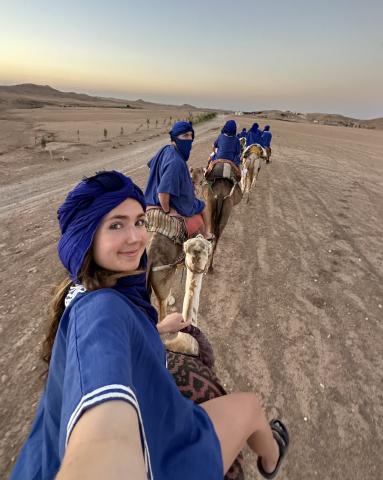
When you’re abroad, it’s easy to lose track of your spending. There are so many new things to try and places to visit. Before you know it, you’re looking at your bank account wondering where all your saved-up money went. After experiencing this the first time studying abroad, I knew I had to develop a better system for when I went back. Here are a few things I learned that helped me save a fair amount of money the second time around:
- Planning Ahead
Planning ahead of time can be a real game-changer. Researching your intended destination before leaving to get a sense of what you want to do and what the costs are like can help you establish a rough plan or budget for your trip. Yes, I know this might feel a bit overwhelming, but knowing more about what you’re stepping into will help you avoid unnecessary purchases. Once you have established a rough budget, budgeting apps like TravelSpend can help keep track of your spending, especially with its currency conversion feature. I would also highly recommend withdrawing cash before going abroad, as ATM card fees can be brutal and a bit dodgy in other countries. Try exchanging it at your bank and if not look for a bank or currency conversion place in your host country - avoid airports or train stations as the exchange rates can be high. Check out the Student Guide for more guidelines about banking abroad.
- Budget-Friendly Travel
We all know that transportation expenses can be a killer. When it comes to traveling in Europe, I tend to avoid airplanes because of the airport stress and the crazy luggage fees. However, when I do need to fly, I find flight scanner apps to be helpful, like Hopper or Skyscanner to track flight prices, for booking weeks ahead. Otherwise, I usually opt for buses (FlixBus mainly) or trains, and use apps like Omio to purchase tickets and compare prices. The amount of money, stress and comfort I’ve saved myself by taking trains or buses abroad, even when booking last minute, has made me never want to fly again.
- Grocery shopping
Eating out can sound like the best option, especially when the food is good quality and cheaper. However, eating out every day can start to add up. I’ve found that going to the grocery store or local market can be a cost-effective alternative to eating out on days I don’t necessarily need to. You’d be surprised how many good-to-go and take-home options the grocery store in your neighborhood might have. Plus, bringing home food that lasts longer and cooking meals with people in your program is always a great way to bond. One of my fondest memories is when we all brought an ingredient and the Italians in our program cooked us a bunch of pasta dishes to show us what “real, non-American" pasta tasted like. We shared many laughs that night over some delicious pasta.
- Free and Low-Cost Activities
It’s easy to overspend on tours, museums, and other cultural attractions - trust me, I’ve been there. However, many museums or attractions give out student discounts, which can save you a little extra spending money. I recommend bringing your student ID just in case. Signing up for free walking or biking tours is another budget-friendly way to learn more about the place you’re in while meeting new people. I signed up for a walking tour when I first got to Amsterdam, and I ended up meeting a French girl my age who I instantly clicked with. She was coincidentally staying at the same hostel, and we ended up spending the rest of our stay together!
With all that said, unexpected expenses might come up, so it’s good to stay flexible and be prepared to adjust your budget accordingly. Remember that you’re not alone, and many others are in the same boat. Don’t hold yourself back from valuable experiences and embrace the adventure ahead!
By Brynli Nelson
Spanish Language and Culture in Segovia, Summer 2022
GlobalWorks Internship in Lisbon, Summer 2023
Image
